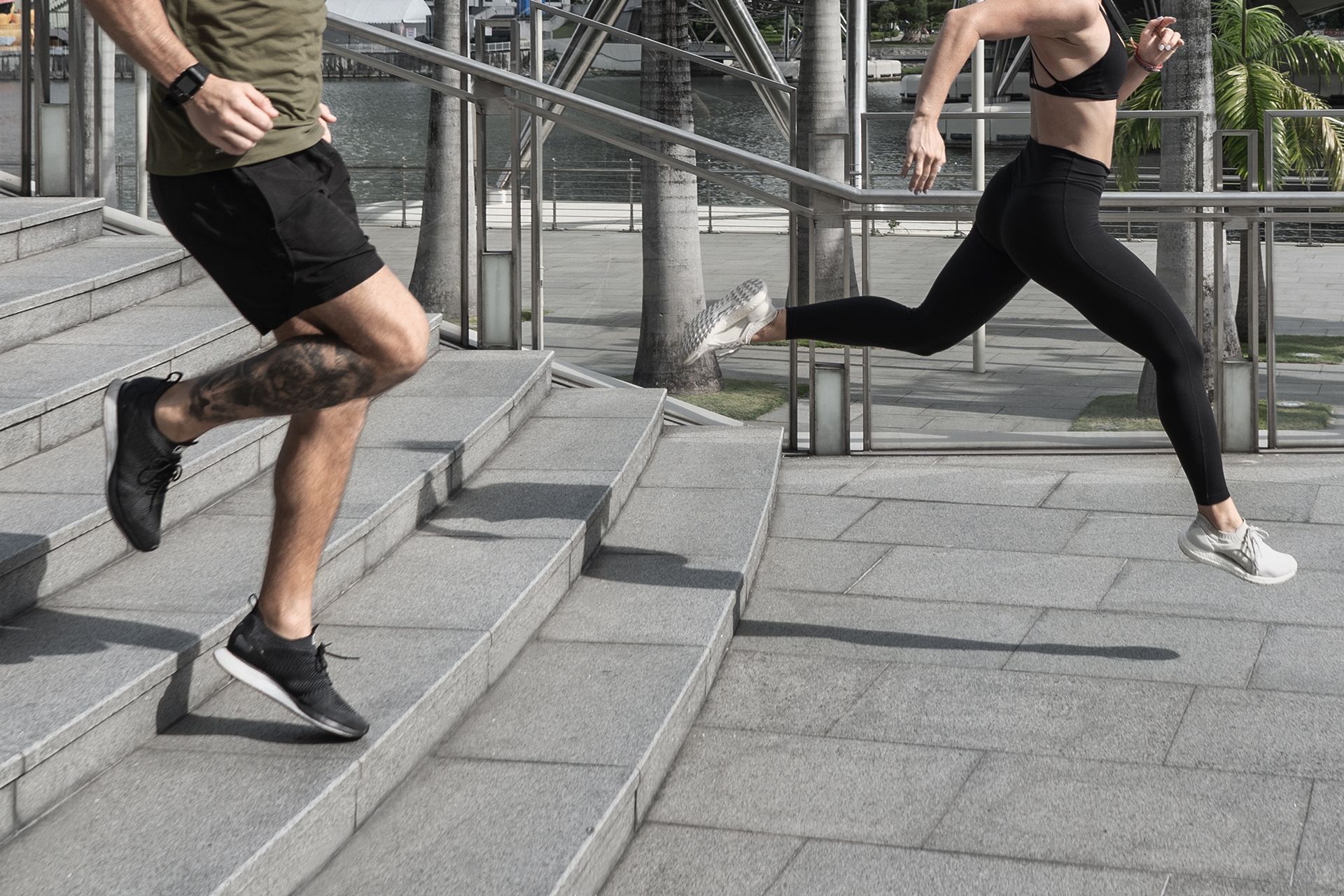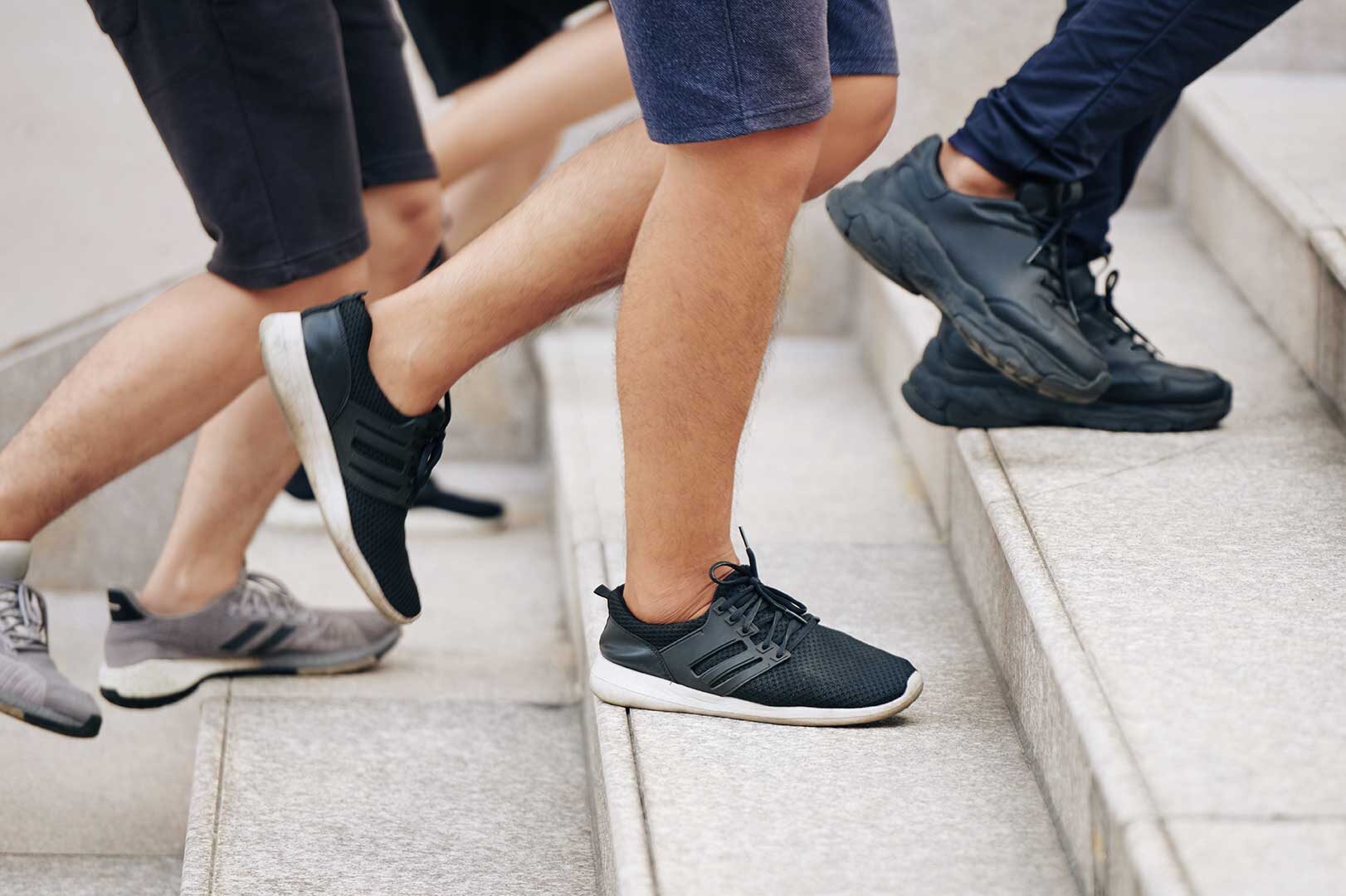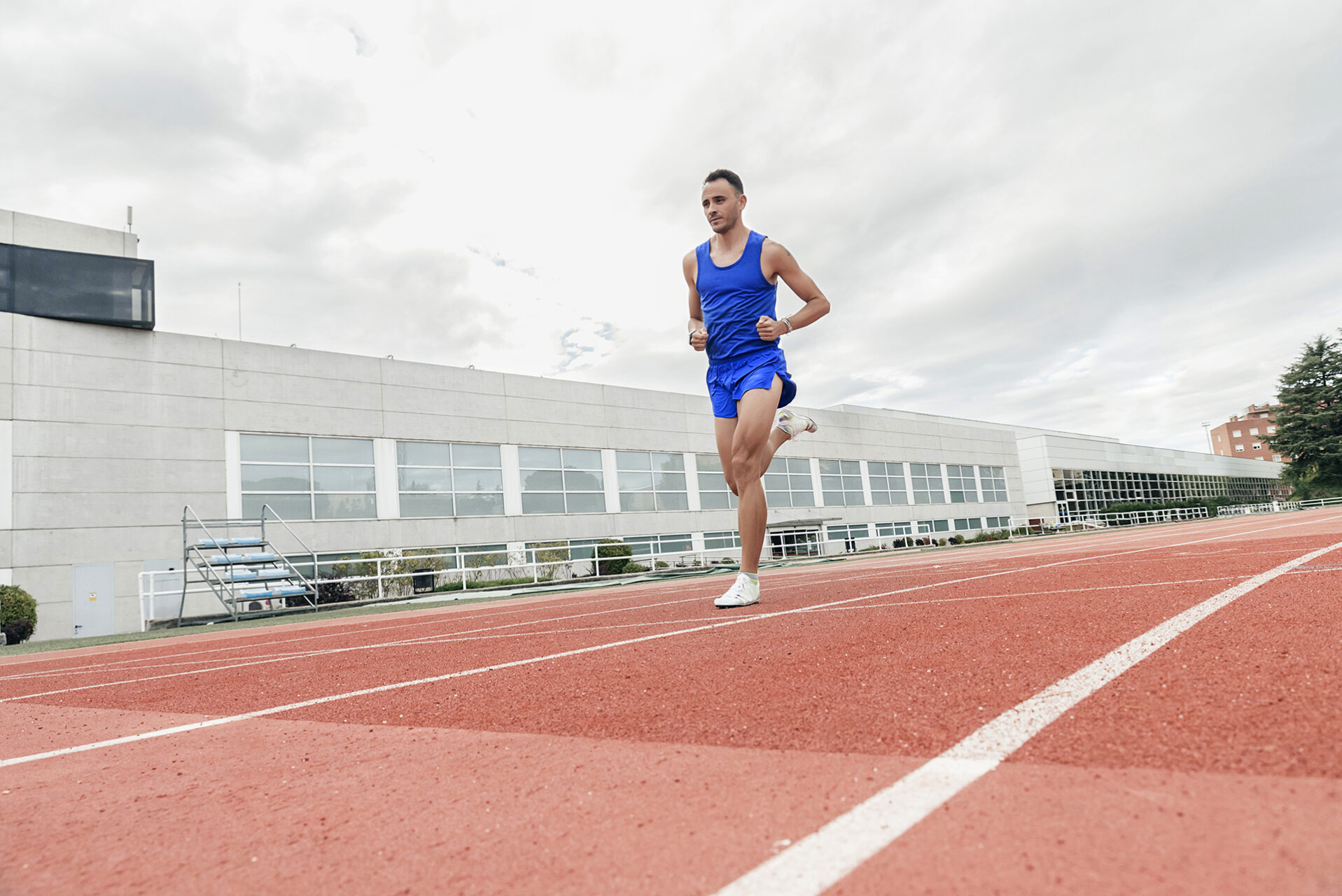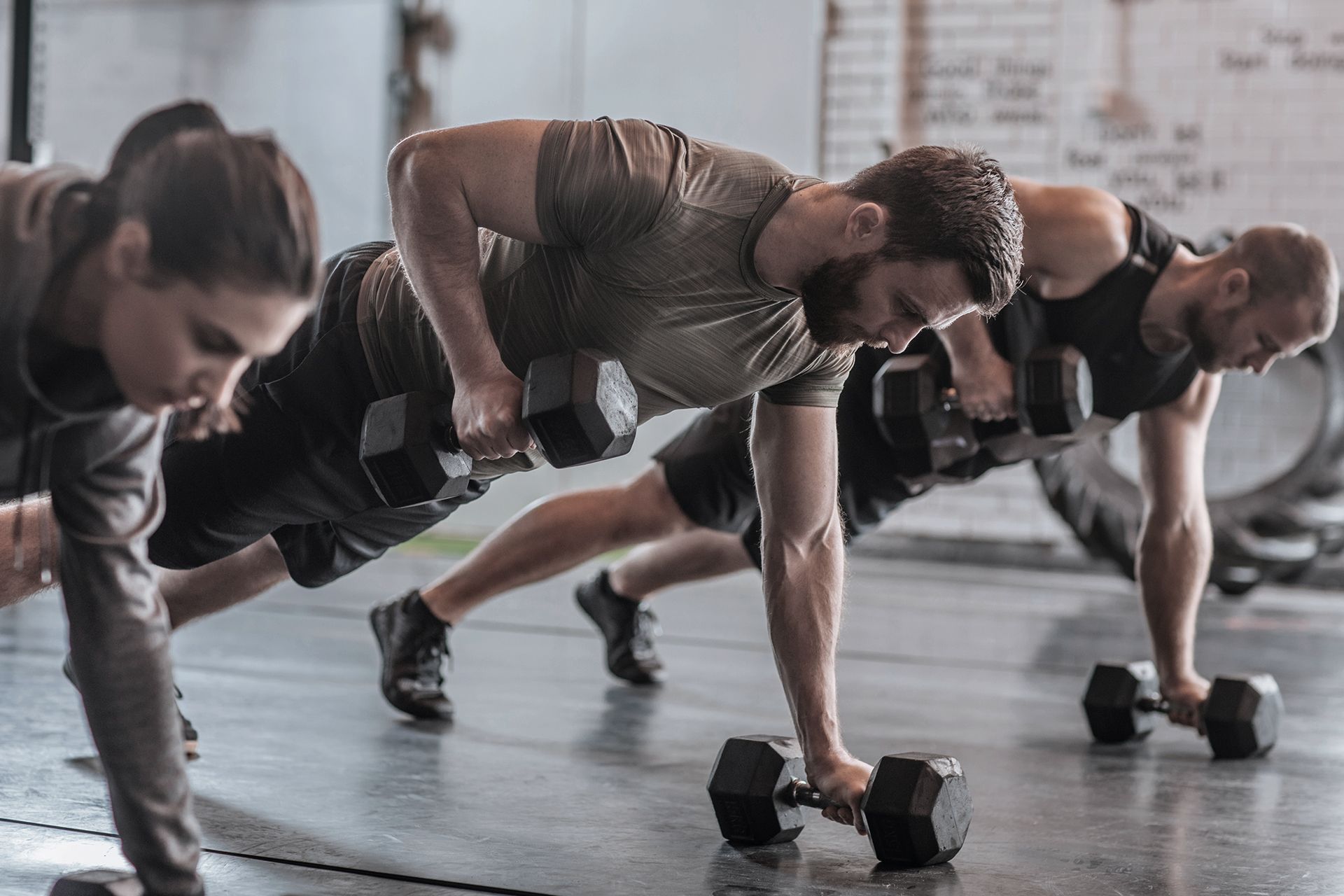What if your new trainers didn’t just make you feel enthusiastic, but actually made running easier for you? There is a new breed of shoes on the market which claims to do just that.
The precise measure of how effectively you run is known as your running economy: it is the amount of oxygen you need to breathe in order to maintain a certain velocity, known as VO2. The lower your VO2, the more effectively you are running [1].
Energy return shoes claim to improve running economy by harnessing energy that would otherwise be lost. Every time your foot hits the ground, energy is transferred out through pressure on your shoes.
Energy return styles claim to store some of this energy and give it back to you, in the form of extra bounce to help you push off again for your next step. Over the course of a whole run, it could make you go further and faster.
It sounds too good to be true, but there’s science behind these claims. Energy return soles have been shown to improve running economy significantly in athletes. Even if you’re just an occasional jogger, you’ll probably find the springy soles more comfortable than basic trainers.
In reality, it’s not just the sole which affects performance while running. The shoe upper sole the texture of the lining and even the way you lace them up all have an effect on running economy or your risk of injury.
For a casual runner, the type of person who does two miles around the park every Sunday, injury is probably a bigger concern than efficiency. Running economy is great, but there’s no point reducing your VO2 if you end up with shin splints. And this is where energy return shoes may not be the best choice.
Why Heavily Cushioned Shoes Cause More Running Injuries
Controversial recent research has turned on its head what we thought we knew about running injuries. It was long thought that high impact forces increased the risk of injury, so sports shoes were made thick and cushioned in order to protect the feet. It’s now suggested that impact is actually a useful method of feedback, allowing the body to brace and adjust itself to road conditions. This is why running on hard surfaces does not do more damage than running on soft [2].
Heavily cushioned shoes have been linked to higher rates of injury. Researchers suggest this is because the squishy sole tricks your body into thinking it has landed on a soft surface – only to be unprepared for the jolt that comes a few milliseconds later, when the sole is fully compressed and your foot jars against the ground.
Thickly cushioned shoes also reduce running economy – think about how difficult it is to walk on soft sand, rather than firm concrete. Energy return shoes give an extra boost, but it may not compensate for the disadvantages of a thick sole.
Energy Return and Minimalist Shoes Are The Way To Pace Forward
Research on the body’s adaptations to impact has led to a recent craze for ‘minimalist’ shoes: with paper-thin soles and flexible uppers, they feel more like rubbery socks than shoes.
The evidence for minimalist shoes is mixed. Studies show that they offer better running economy than normal, cushioned shoes [3]. But a switch from cushioned to minimalist shoes can cause serious foot problems, unless carefully managed. In one study, almost half of participants developed painful bone marrow edema in their feet after switching to minimalist shoes [4].
Energy return shoes aim to improve running economy with advanced technology that lifts you off the road; minimalist shoes try to bring you as close as possible to running barefoot, allowing your body to move naturally.
Both have been shown to improve running economy, and both have been linked to an increased risk of injury. Energy return and minimalist shoes are both recent inventions and no studies have been done comparing them, so we have to draw conclusions from what evidence there is. So how can you decide whether one of these new types of shoes is right for you?
If you’re experiencing heel pain while running, then you’ll want to read our article about our leading podiatrist Tim Maiden’s favourite running shoe selections.
If you’ve been to a large sports shop, you’ve probably been subjected to gait analysis – where someone sticks you on a treadmill and thoughtfully prescribes a shoe to make your run ‘properly’. You’ve always suspected it was a scam (how come the best shoes for me are never the pair which are half price in the sale?), and now science is backing that up.
Comfort Above All When Selecting The Right Shoes
After decades of conflicting evidence, researchers have proposed that people instinctively know the right shoe for them. We’ve gone full circle, and sports science now harks back to what your mum told you when buying school shoes.
Try them on, wiggle your toes, bounce up and down a bit, and whichever shoe feels best is the one you should buy. Forcing yourself to wear a certain type of shoe because it’s good for you is likely to lead to injury in the long term.
Scientists say that “a runner intuitively selects a comfortable product based on their own comfort filter, which allows them to remain in their preferred movement path”. In layman’s terms: the shoes which feel most comfortable to you will be the ones that allow your body to move naturally, and allowing your body to move naturally improves your running efficiency and reduces risk of injury.
Simply put, whether you choose energy return or minimalist, the shoes which feel most comfortable will probably be the right ones for you.
Our podiatrists are high-qualified to provide a footwear assessment and advice to help improve your foot health and prevent future injuries. If you’re suffering from pain or discomfort, your footwear may be the cause. Find out more about our Footwear Assessment services.
Sources
[1] Beverly, J. The Truth About Energy Return in Your Shoes. Runner’s World. October 15, 2015.
[2] Weijie Fu (et. al), Surface effects on in-shoe plantar pressure and tibial impact during running,
Journal of Sport and Health Science, Volume 4, Issue 4, 2015, Pages 384-390, ISSN 2095-2546, https://doi.org/10.1016/j.jshs.2015.09.001.
[3] Isabel Sarah Moore, Andrew Jones & Sharon Dixon (2014) The pursuit of improved running performance: Can changes in cushioning and somatosensory feedback influence running economy and injury risk?, Footwear Science,6:1, 1-11, DOI: 10.1080/19424280.2013.873487.
[4] A. W. Johnson (et. al). The Effects of a Transition to Minimalist Shoe Running on Intrinsic Foot Muscle Size. Int J Sports Med 2016; 37(02): 154-158. DOI: 10.1055/s-0035-1559685.






